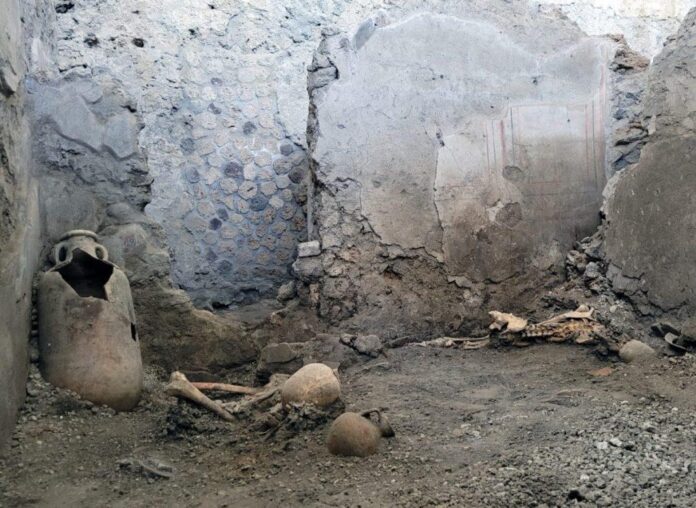Recent excavations at the ruins of Pompeii have turned up two new sets of human remains—the first such discovery in several years—which indicate how tangential hazards like earthquakes proved perhaps more dangerous than the eruption of Mount Vesuvius in 79 C.E.
The victims—two men estimated to be 55-years-old at the time of their demise—were discovered beneath a collapsed wall on the edge of an unused utility room within the House of Chaste Lovers, where onsite staff members were repairing walls and ceilings to ensure visitor safety. Details on their deaths, gleaned through advanced analytics, illuminated the disaster’s profound human realities.
Mount Vesuvius was a two-day affair. It began with an eruption column that doused Pompeii in over 16-feet of pumice and ash. Weak lava flows arrived the next morning, growing in strength as hours progressed. Earthquakes preceded the blast and continued throughout, toppling buildings that crushed residents, including these newly discovered bodies, who researchers believe likely perished between the cloud and lava phases.

Aerial view of the scene, featuring both skeletons. Courtesy of Pompeii Sites
Director Gabriel Zuchtriegel noted that new technology has offered unprecedented insight into these victims’ final moments.
On-site analyses published in Pompeii’s online journal confirm they both died from trauma, though not without a fight—they had sought shelter in this ill-fated spot. One figure had his arm raised in self-protection against the room’s falling south wall. During the excavation, an archaeologist purportedly gestured towards both bodies and said, “this is who we are.”
Containers for transporting wine, a domestic shrine in the next room, as well as a trove of bowls, jugs, beads, and coins dating back to 150 B.C.E. were also found on the scene.
Vesuvius claimed approximately 2,400 lives. The human remains of 1,300 people have been uncovered since excavations at Pompeii began in 1748. The archaeological team has yet to comment on how much work remains to be done within the House of Chaste Lovers, but Italy’s culture minister Gennaro Sangiuliano said this latest discovery “confirms the necessity of continuing scientific investigation.”

























